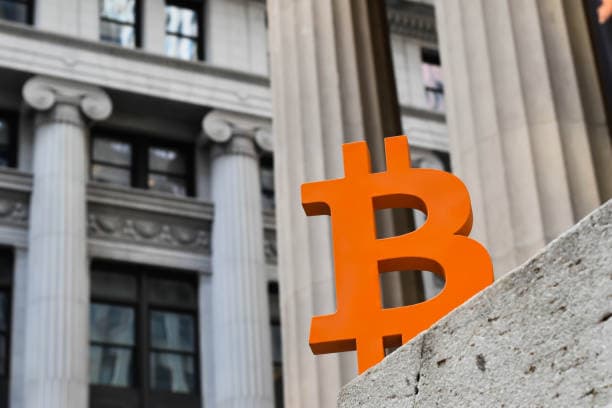Blockchain payment is a payment method that has gradually gained attention in recent years with the rise of blockchain technology. It solves many problems in traditional payment methods, such as high fees and delayed transactions, through decentralized technology. This paper will analyze in detail the concept of blockchain payment, its working principle and its functions in practical applications, helping readers to deeply understand how blockchain payment changes the traditional payment methods and explore its future development potential. By analyzing specific cases and functional applications, this paper aims to provide a clear and concise introduction of knowledge to help you master the core content of blockchain payment.

Definition of blockchain payments
Blockchain payment, as the name suggests, is a payment method that utilizes blockchain technology. Blockchain is a distributed ledger technology which guarantees the security and transparency of transactions through decentralization. Unlike traditional bank payment systems, blockchain payments do not rely on an intermediary (such as a bank) for clearing and settlement, but rather on each node in the network working together to validate the transaction, ensuring that each transaction is open, transparent and tamper-proof.
The emergence of this approach means that the payment system is able to reduce unnecessary costs and intermediary links, improve transaction efficiency and reduce handling fees. Therefore, blockchain payment not only has the advantages of high efficiency and low cost, but also can provide convenient cross-border payment solutions for global users.
How blockchain payments work
At the heart of blockchain payments lies the blockchain technology itself. The blockchain is made up of a series of "blocks", each containing multiple records of transactions. When a user initiates a payment, the transaction information is packaged into blocks and verified by nodes on the blockchain network.
In the process of blockchain payments, the transaction is not just a transfer of money from one party to another, but also ensures the privacy and security of the transaction data through cryptographic algorithms. The decentralized nature of the blockchain network ensures that transactions are transparent and no single entity can manipulate the entire network. This decentralized structure is the biggest feature that distinguishes blockchain payments from traditional payment methods.
Key Steps in Blockchain Payments:
- Initiating a payment request: The user initiates a payment request by entering payment information through the wallet or trading platform.
- Transaction validation: Nodes in the blockchain network work together to verify the validity of the transaction, ensuring that the funds are sufficient and the transaction is legitimate.
- Transaction Record: Validated transactions are packaged into new blocks that are added to the chain, creating a tamper-proof record of the ledger.
- Transaction Confirmation: Once a transaction is added to the blockchain, it can be confirmed and settled immediately.
This structure ensures that the payment process is efficient and secure.
Blockchain Payments in Detail
Blockchain payment is not just a payment tool, it has many features to fulfill the needs in different scenarios. Here are the main functions of blockchain payment:
1. Cross-border payments
Traditional cross-border payments often require intermediary processing through banks or third-party payment organizations, which is not only time-consuming but also expensive. Blockchain payment, on the other hand, passes payment information directly to the receiver through a decentralized network, eliminating the intermediary link and saving time and fees. Whether it is cross-border remittance or cross-border e-commerce payment, blockchain payment can greatly improve efficiency and reduce transaction costs.
2. Security and privacy protection
Blockchain guarantees the security of transactions through cryptography, where the transaction data is encrypted during transmission over the network and can only be decrypted by authorized parties. The decentralized nature of blockchain ensures that no single entity can control transaction information. This allows users to enjoy a higher level of security and privacy protection when making payments, without having to worry about personal information being leaked or data being tampered with.
3. Efficient and low-cost
Traditional payment methods rely on banks or payment platforms, which usually require a fee and a long processing time. Blockchain payment, on the other hand, eliminates intermediary fees through decentralization, resulting in a significant reduction in transaction costs. The settlement speed is also significantly improved as the transaction information is recorded in real time on the blockchain.

4. Decentralization and transparency
The decentralized nature of blockchain payments allows every transaction to be verified globally without relying on any centralized institution. This makes the transaction process more open and transparent, and anyone can view the transaction records to ensure the legitimacy of each transaction. Decentralization also enhances the censorship resistance of blockchain payments, avoiding the risk of a single point of failure or system crash.
Practical Use Cases for Blockchain Payments
Blockchain payments are already being used in a wide range of areas, with some real-world examples demonstrating their unique benefits.
1. Rebate system of Euronext
Blockchain payments are often used as part of a rebate system in digital currency exchanges. In the case of the Ouyi exchange, for example, when a user makes a transaction on the platform, the platform will automatically distribute the transaction commission to the user through a smart contract system. This process is based on blockchain payment, so users don't need to worry about rebates, and all transaction records and commission allocations can be viewed in real time on the blockchain, ensuring an open and transparent process.
2. International remittances
Traditional cross-border remittances usually take days and have high fees. In contrast, remittance platforms that utilize blockchain payments, such as Ripple and XRP, are able to achieve cross-border remittances in seconds, drastically reducing remittance fees. The popularity of blockchain payments has led to more and more people choosing to make international remittances in this way, especially as the demand for cross-border payments continues to grow in the face of increasing globalization.
The Future of Blockchain Payments
Despite the many advantages of blockchain payments, they also face some challenges. For example, the popularization of blockchain technology is still affected by certain technical barriers, regulatory policies and other factors. With the continuous development of technology and the growth of market demand, blockchain payment may become more mature in the future, adapting to more payment scenarios and driving changes in the global payment system.
More and more countries and regions have begun to regulate and standardize blockchain payments, which also lays a legal foundation for the future development of blockchain payments. It is expected that in the next few years, blockchain payment will realize wider application in many fields such as financial field, cross-border e-commerce, payment and settlement.
summarize
Blockchain payment, as a new payment method, is gradually changing the global payment system. It plays an important role in cross-border payments, financial services, and personal privacy protection with its advantages of decentralization, efficiency, security, and low cost. With the advancement of technology and the gradual improvement of policies, blockchain payment will usher in a broader application prospect. If you have not yet understood this field in depth, now is a good time to learn and apply blockchain payment technology.







